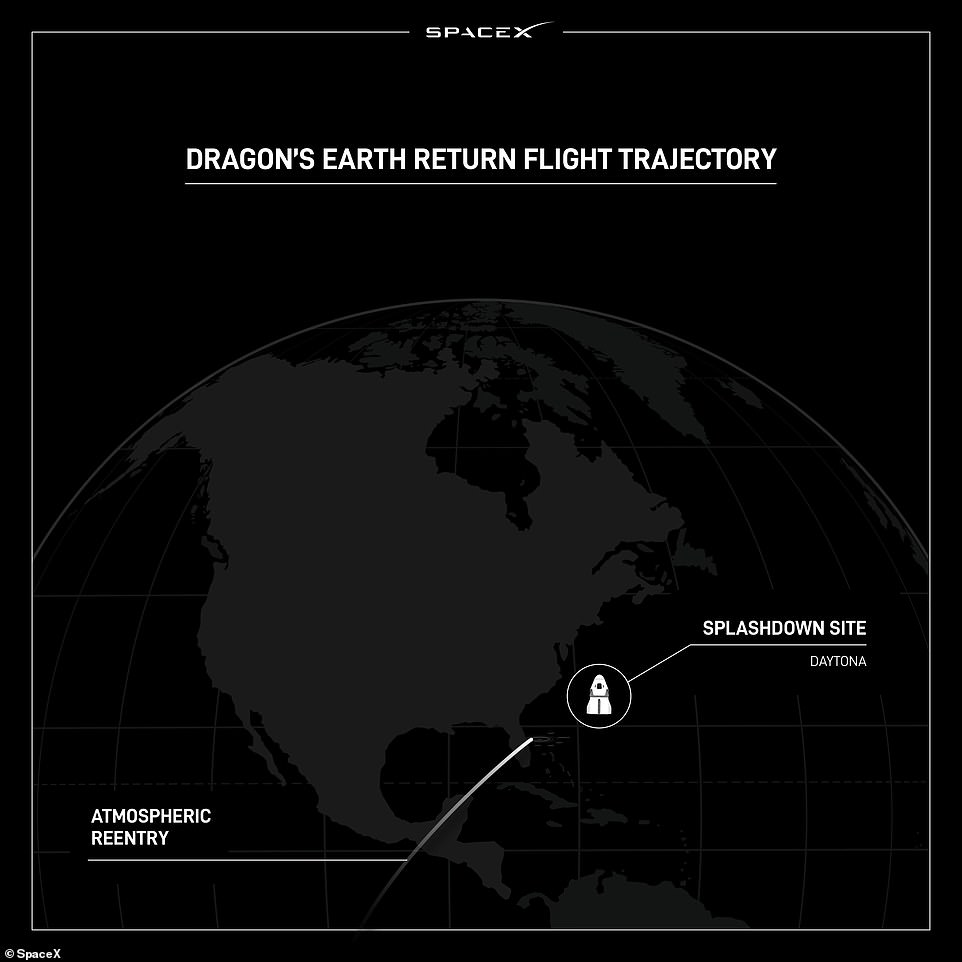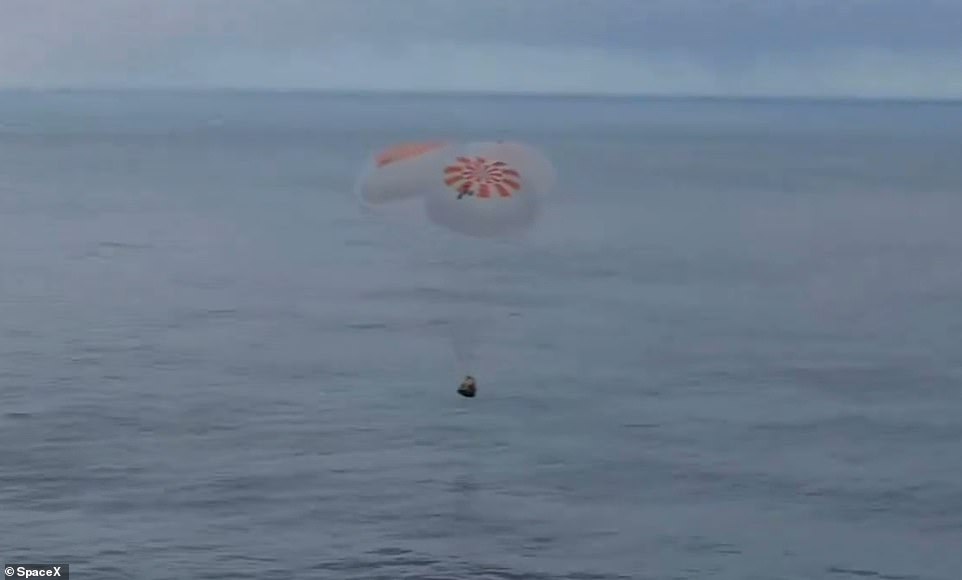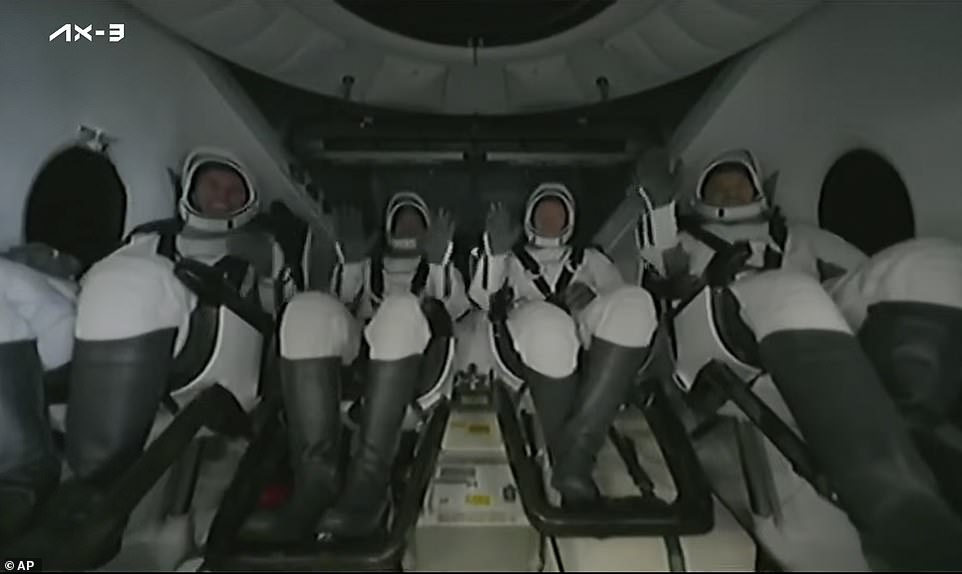Splash! Four astronauts who spent 21 DAYS in space return to Earth in the SpaceX capsule that rocketed through the atmosphere at 28,000 km/hour
Advertisement
The crew of Axiom Space’s Ax-3 mission crashed into the Atlantic Ocean this morning, concluding their three-week journey to the International Space Station (ISS) with a safe return.
A SpaceX Crew Dragon capsule carrying the four astronauts plunged through our planet’s atmosphere at speeds of 28,500 miles per hour, eventually floating down on parachutes to rest in calm waters off the coast of Daytona, Florida.
Air speeds of this magnitude create enormous amounts of friction, which turns into heat, testing the limits of the capsule’s heat shields with temperatures estimated at 3,500 degrees Fahrenheit, according to SpaceX.
The landing of the Dragon capsule just before 8:30 a.m. EST marked the end of Axiom’s third low-Earth orbit mission.
The SpaceX Dragon Crew capsule was floating in the Atlantic Ocean off the coast of Daytona, Florida, after it crashed. The surface was scorched by the enormous heat generated during the reentry
Astronauts jettisoned the Dragon’s trunk at 7:37 a.m. EST, knocking off the disposable section located just below the crew compartment.
By 7:55 a.m., they had completed a de-orbit burn, which lifted the capsule out of Earth’s orbit and onto its return path.
Once the capsule entered the atmosphere, the friction against the surrounding air created an ‘envelope’ of plasma around the craft. This temporarily disrupted communications with ground control, a routine part of spacecraft landings.

The capsule reentered Earth’s atmosphere over the Pacific Ocean, just west of Mexico. It flew over the Yucatan Peninsula and Florida before landing in the Atlantic Ocean around 8:30 a.m. EST
At about 8:25 a.m., the astronauts turned their seats so they were sitting upright as the capsule fell to Earth — instead of looking upward, as they did during launch.
Minutes later, the parachutes deployed and the craft drifted toward the ocean.

The SpaceX Crew Dragon capsule crashed just before 8:30 a.m. EST on Friday. Shortly afterwards it was loaded onto a salvage ship
Ax-3, which launched on January 18 from the Kennedy Space Center in Florida, was SpaceX’s first voyage with an all-European crew.
Michael López-Alegría, 65, was the commander of Ax-3. He is a former NASA astronaut and has Spanish-American dual citizenship.
He was accompanied by Swedish aviator Marcus Wandt, 43, another mission specialist, Alper Gezeravci, 44, and Italian Air Force Colonel Walter Villadei, 49.
Walter Villadei is from Italy, Alper Gezeravcı has become Turkey’s first astronaut and the Swede Marcus Wandt is also on board.

Ax-3 crew gave the thumbs up after crashing safely into the ocean while being placed aboard a salvage ship
During their time aboard the ISS, they participated in several experiments focused on the long-term future of human spaceflight.
These experiments include testing a muscle stimulation and monitoring suit, testing the stress responses of gene-edited plants growing in microgravity, monitoring bone density in microgravity, and monitoring the sleep patterns of astronauts in space.
Depending on the weather, the capsule could have landed in multiple locations in the ocean.
In preparation, SpaceX had stationed recovery ships on both sides of the state, in both the Atlantic Ocean and the Gulf of Mexico.
“Spreading the supported sites across multiple locations helps maximize the return opportunities for this mission for future crews, reducing the likelihood of having to wave goodbye due to inclement weather,” SpaceX production and engineering manager Jessie Anderson said in a livestream of the re-entry.
